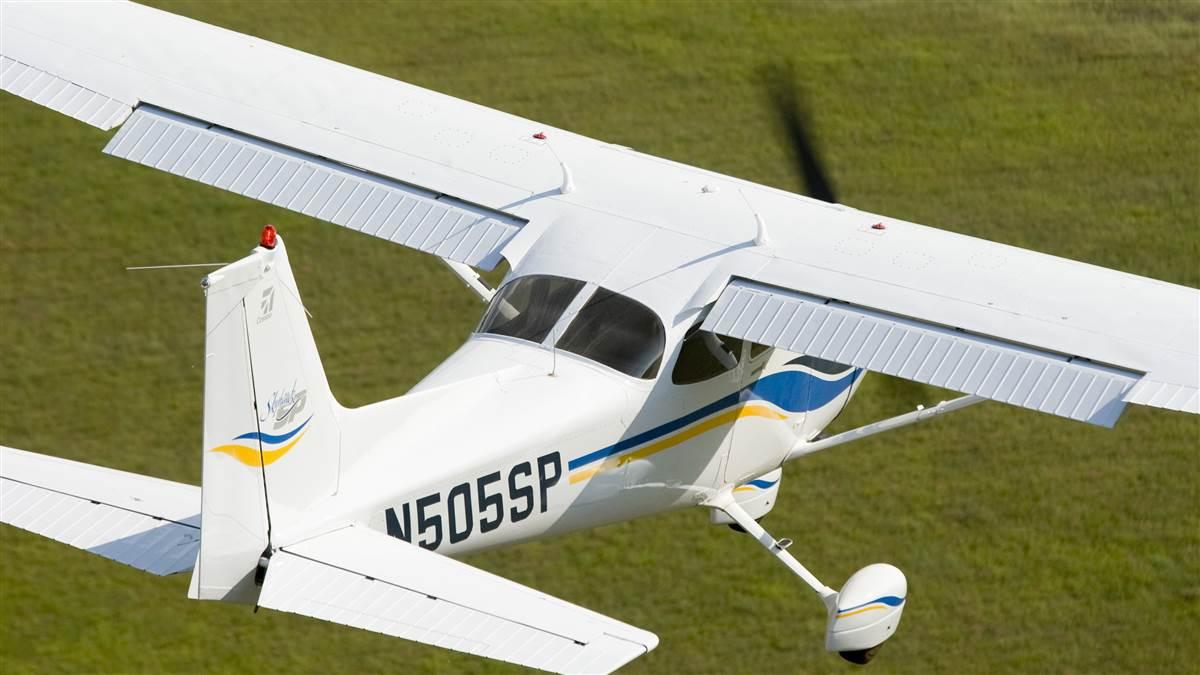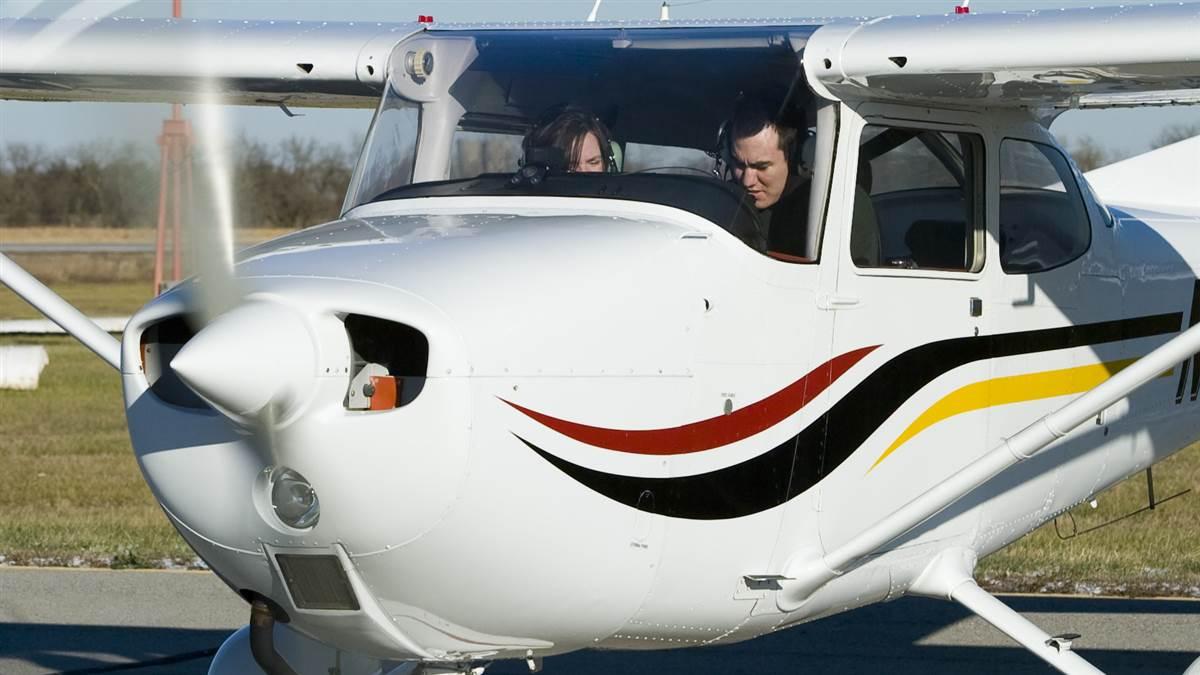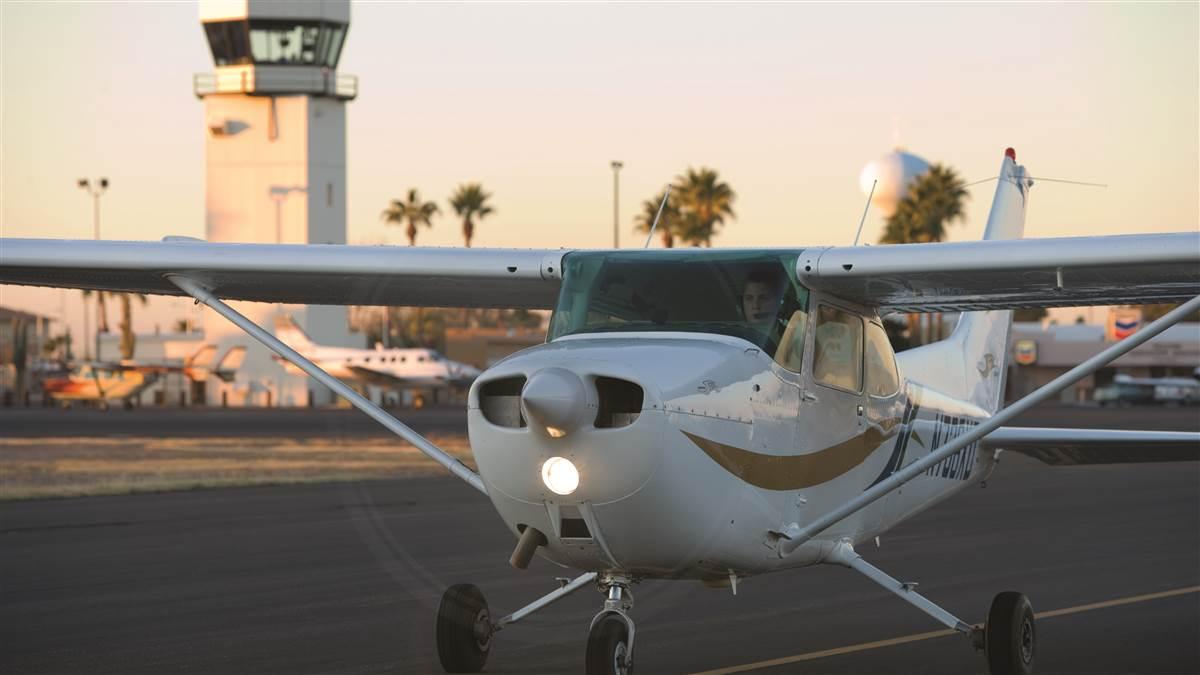10 challenges in learning to fly
Steps in a larger journey
Learning to fly is not easy, and each skill learned requires the application of some degree of mastery of previously learned skills. Some are easy to learn—and master—and some are just hard. But none of them is impossible.
Here are 10 required skills that will give you varying degrees of difficulty. Nine are directly related to aviation. The tenth is one you’ll need to finish your training, not to mention enjoy it. For the sake of simplicity, this list is limited to fixed-wing primary flight training.

 1. Landings
1. Landings
Landing is the most perplexing skill to learn, because each one is different, and it all takes place very close to the ground, at what can appear to be a terrifying speed (wait until you fly jets to find out what it’s really like to land fast). The weather is never the same on any two landings, because the wind is always different. Further, the slightest change in how you fly an approach will change what it looks like and how you land. Success comes only with practice—and lots of it.
Even so, landing is like watching a baby learn to walk. The baby struggles mightily for a while, and then one day, it just clicks—and you wonder why it was so hard.
2. Crosswind landings
Many pilots “learn” how to make crosswind landings, and then avoid them forever after they pass their checkrides. Very few students master them. Crosswind landings require a genuine understanding and comfort level with the skill set. But once you figure it out, they’re easy and enjoyable (within reasonable limits, of course). As an inexperienced pilot, seek out crosswinds with a good, confident CFI and practice until you break the code—and memorize it. For good measure, practice with the wind coming from each direction.
3. Weather analysis
Not all of us are born to be Jim Cantore or Mike Seidel of The Weather Channel, but weather is everything to a pilot. There are many weather products you can use to review all kinds of micro- and macro-scale information. You need to become somewhat proficient in understanding weather, especially on a large scale. It helps to have so much weather information available on the internet, and most students will find it helpful to look at weather maps and forecasts before calling for a briefing. A good briefer will put that information in context, and help you to understand how the weather will affect your proposed flight. (If you tell the briefer you’re a student pilot, he or she should slow the pace of the briefing and answer any questions you have.)
4. The limits of IFR training
As a private pilot candidate, the amount of simulated instrument training that you receive is minimal, but it can be deceiving—and it can make you think that you can do more than you really can. It can also seem easy, but take it from me: Flying in the clouds is exhausting, both mentally and physically. The training that a private pilot receives is not intended to be a tool to continue to fly in instrument meteorological conditions—it’s just a survival tool to get you back into visual meteorological conditions.
 5. Understanding risk
5. Understanding risk
Risk is inherent in everything we do, from getting out of bed to driving our cars to flying. Flying, however, is different, because we are operating in a three-dimensional environment in which we do not naturally belong. Further, risk does not follow a simple formula, so what adds a greater component of risk on one flight may not even be an issue on another. For example, flying after work adds a level of fatigue that flying on a day off likely doesn’t have. Learning how to consider the various factors that contribute to the total risk product is a skill that must be learned. Some of it is based on your personality, some of it is life experience, and some is learned from your CFI. The final decision about how much risk is too much is one person’s—yours.
6. Flying without a GPS
GPS—it stands for Goin’ Purty Straight—is great, but you need to have a deeper understanding of how to navigate without the moving map. So practice some navigation in which the only moving map is the one on your lap, which moves when you refold it, or put it down to—gasp!—look out the window. Flying via dead reckoning is a skill, and on a clear day it is enjoyable. Seasoned pilots prefer this kind of IFR—as in, I Follow Roads. It’s also a skill that you’ll need to demonstrate on your checkride—and one that will come in handy if your GPS navigator’s screen ever goes dark.
7. Knowing your limits
Knowing your limits applies to winds, ceiling and visibility, the airplane you choose to fly, and everything in between. If measuring risk is the compilation of many individual data points, knowing your limits would be the practice of scoring each of them on a scale. Those scores will both change (your comfort level on a short runway, for example, will grow with experience) and vary (your fatigue level will be different on every flight). The limits of your training should be the baseline decision point for everything you do. It’s one thing to tackle a crosswind that is two or three knots more than your previous gust level while flying solo. It’s something else to go 15 to 20 knots over that value. Know what you can do on your own, and know when to ask your CFI for help. Asking for help shows a greater understanding of risk.
 8. Master ATC and radar
8. Master ATC and radar
If you learn to fly at or near a towered field, you’ll be forced to get proficient on the radio, and soon. If you fly from nontowered airports, interaction with controllers may be sporadic. As with learning another language, immersion can be a great tool. The website LiveATC is a great resource for listening to both slow and rapid-fire communications. Listening to the action at New York’s LaGuardia or John F. Kennedy International, New Jersey’s Newark Liberty International, San Francisco International, or Los Angeles International airports will expose you to both the good and the bad—and you’ll also hear pros make mistakes, as well as correct each other when necessary. Once you get used to utilizing flight following and ATC radar services, you’ll realize what great tools they are, and you’ll better appreciate the safety net they provide.
9. Flying frequency
Learning to fly means learning new physical and mental skills, and, as with any skills, learning and mastery are achieved with practice and repetition. The adage of flying as much as possible still holds, even if you’re doing simulator training. You need to train your mind and your muscles to respond the way you want. The more frequently you fly, the faster the imprinting in your brain will occur. Flying frequently will help to make learning to fly more enjoyable, take less time, and cost less money.
 10. Paying for it
10. Paying for it
Learning to fly is expensive, and transactions that involve large sums of money can cause stress. Save as much as you can before you start and pay as you go, buying no more than five or 10 hours of flight time at once (many flight schools offer discounts for buying five or 10-hour blocks). Swiping your credit card may be easy, but if you aren’t ready for the bill when it comes due, you might panic and quit. Be prepared, and be realistic. If you have a skill that you can barter, don’t be afraid to negotiate. At my flight school, we had a student who was a CPA, and he worked a deal to trade flight time for helping with the books, accounting, and tax compliance. Others have traded expertise in marketing, web design, legal aid, and other skills that a flight school might need (or desire)—but may not be able to afford at market rates. No matter what you do, budget realistically.


